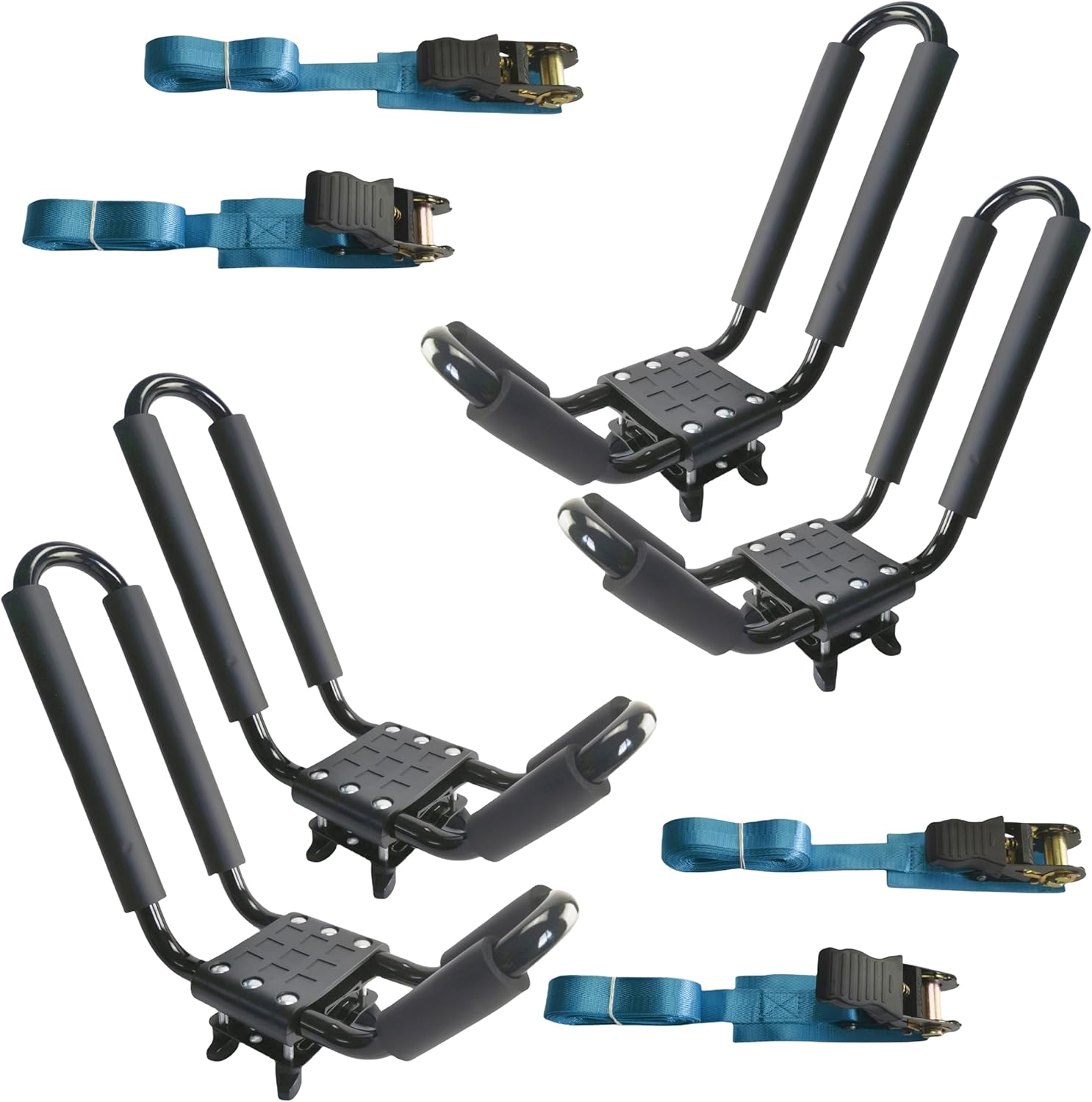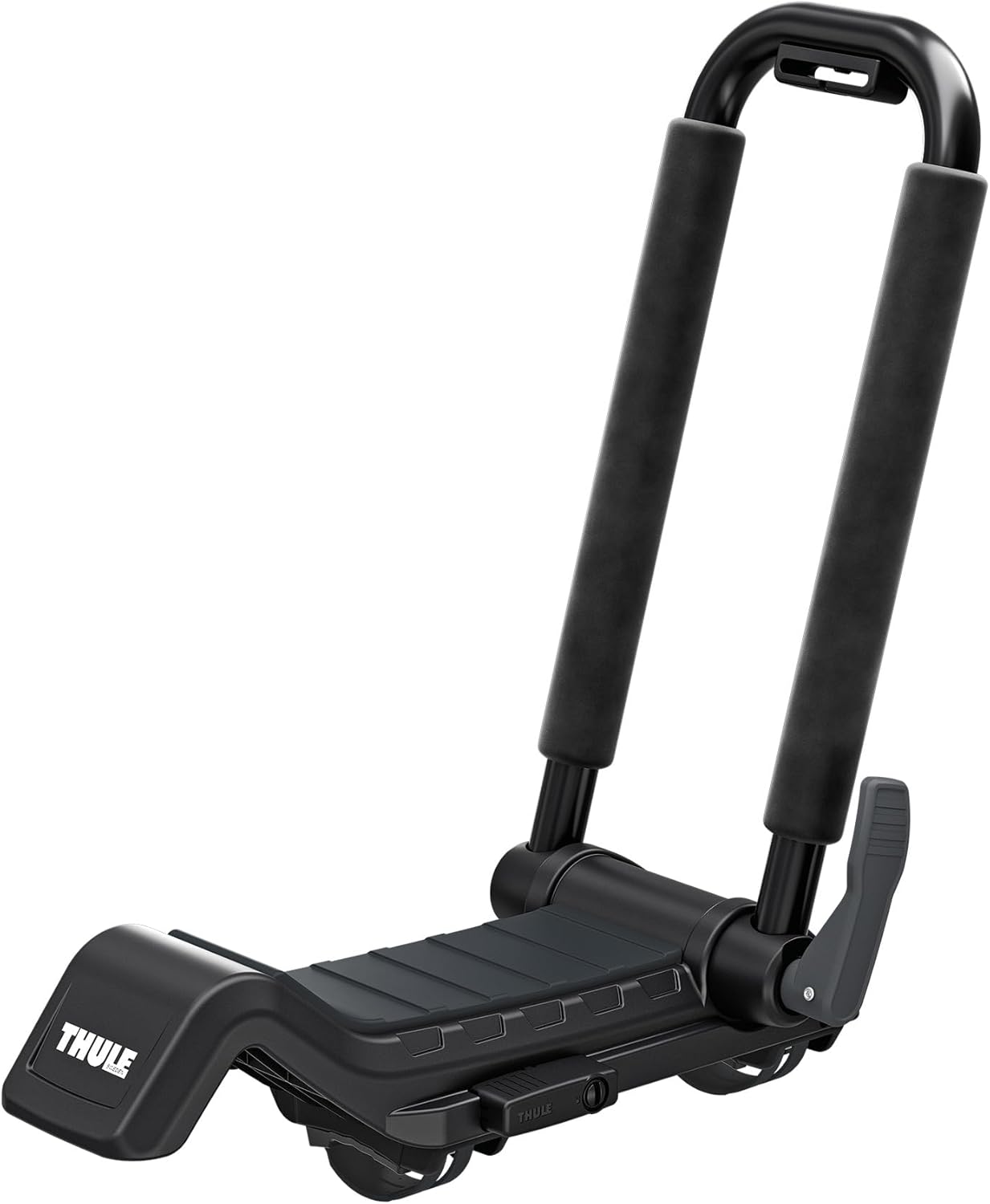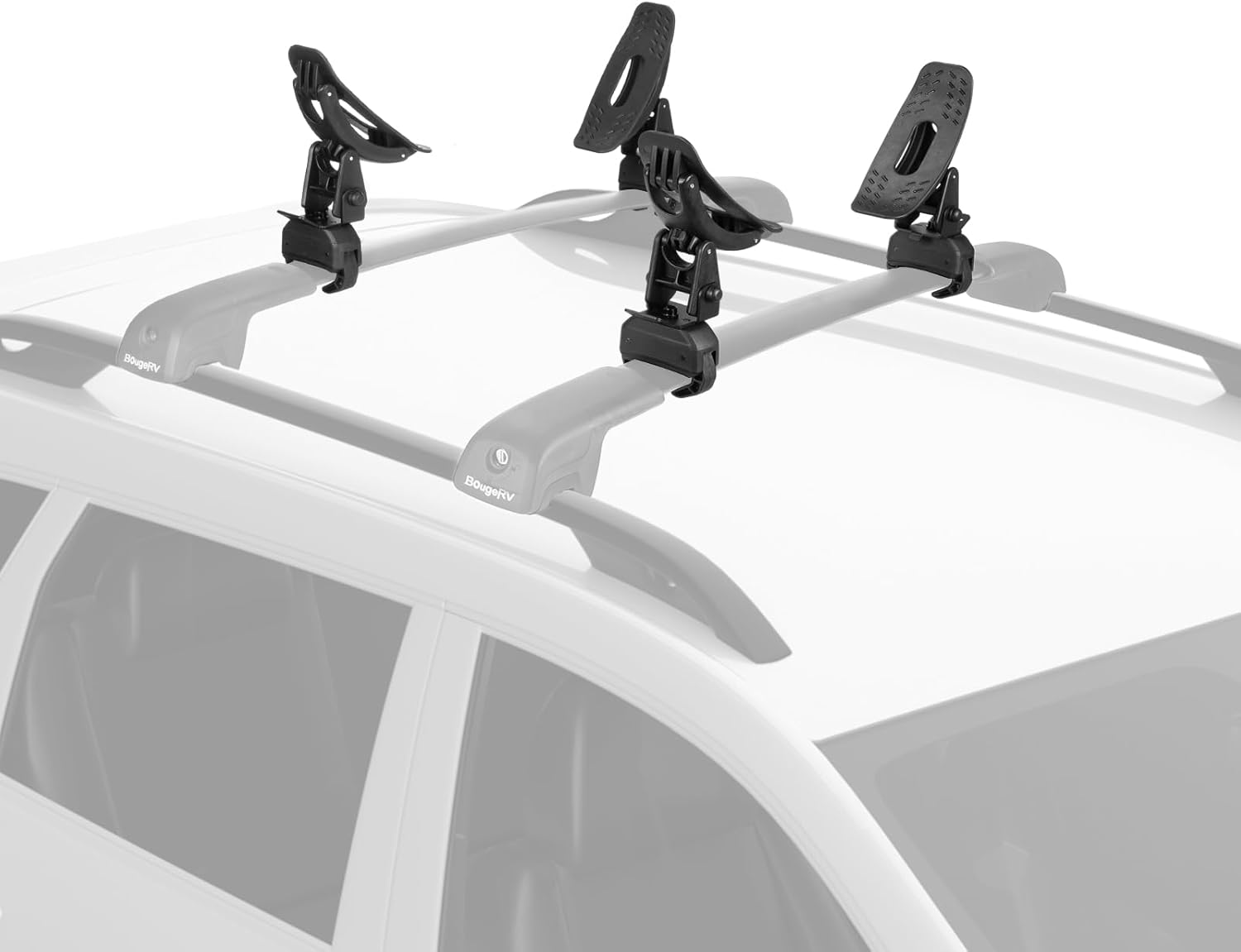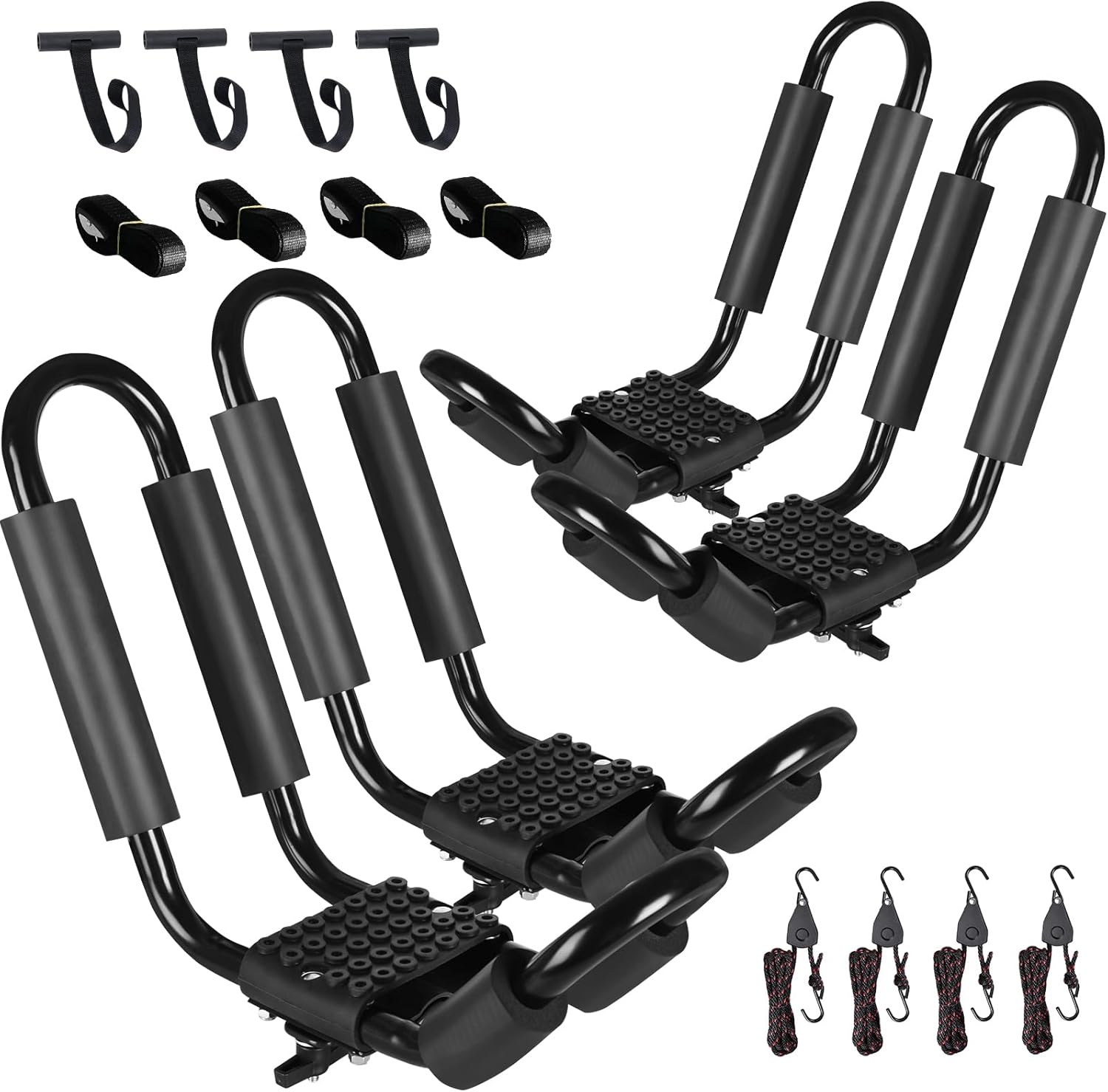How To Transport 2 Kayaks Without A Roof Rack
How to transport 2 kayaks without a roof rack might sound like the start of a comedy routine: two boats, one car, and no fancy hardware. Picture your neighbor giving you that look as you wrestle plastic hulls onto your sedan like you’re auditioning for a circus act.
But the question is real, and the struggle is familiar. Many paddlers own kayaks long before they invest in racks or trailers, and they still need safe, practical ways to get their boats to the water.
This guide will not only answer how to transport 2 kayaks without a roof rack but also walk you through the methods step by step. It will highlight gear choices, vehicle-specific tricks, safety rules, and the little mistakes that often cause damage or fines.
How To Transport 2 Kayaks Without A Roof Rack
Before diving into every nuance, here’s the straightforward how to transport 2 kayaks without a roof rack method most paddlers can rely on when moving two kayaks without factory racks:
- Gather the gear: Two closed-cell foam blocks (or pool noodles cut lengthwise), four cam straps (12–15 feet), two bow and stern tie-down lines, and a red safety flag for overhang.
- Prepare the roof: Place foam blocks evenly across the roof where the hulls will rest. This protects your paint and creates grip.
- Load the first kayak: Place it hull-down on the foam, centered with equal overhang front and back.
- Load the second kayak: Place it hull-to-hull on top of the first or on its side if the boats nest well. Adjust so the weight is balanced.
- Secure cross straps: Run two cam straps across both kayaks, feeding them through the inside of your car doors (not windows). Cinch tightly without crushing the hulls.
- Add bow and stern lines: Tie both kayaks’ bow and stern handles to secure tow points under your vehicle’s frame.
- Check and flag: Tug both kayaks, check for shifting, and attach a red flag to any overhang over 3–4 feet.
- Test drive: Drive one mile, stop, and re-tighten straps before hitting the highway.
That’s the essence of how to transport 2 kayaks without a roof rack. Now let’s explore the details and alternative methods for different vehicles, trips, and conditions.
Loading Two Kayaks Step-by-Step (Detailed)
Here’s a deeper dive into stacking two boats safely:
- Prepare the roof: Clean it first to avoid grit scratching your paint. Place foam supports spaced at least 2–3 feet apart.
- Load the bottom kayak: Center it so overhang is equal front and rear.
- Load the top kayak: Flip it hull-to-hull, so the boats nest together. This prevents wobble and spreads pressure evenly.
- Run straps: Place one strap near the bow and another near the stern, crossing both boats and feeding straps through your car’s doors.
- Tighten straps: Pull firm but stop once the hull begins to compress.
- Secure ends: Use bow and stern lines to anchor each kayak to strong points under your bumper.
- Final check: Grab the boats and shake firmly. If they move, re-tighten.
That is the most common and safest method when you must carry two boats.
Legal and Safety Considerations
When carrying two kayaks without a rack, the law doesn’t care about your creativity, it only cares about visibility and safety. Most regions enforce rules like:
- Loads cannot extend more than 3–4 feet beyond the rear without a red flag.
- Anything sticking beyond the sides by more than a few inches is considered unsafe.
- Drivers are responsible for lost cargo, including fines and liability for accidents.
A red safety flag is cheap and often required by law if kayaks extend past your trunk or tailgate. Bow and stern tie-downs are not optional; they prevent wind lift at highway speeds. Ignore them, and your kayak may turn into an unintended sail.
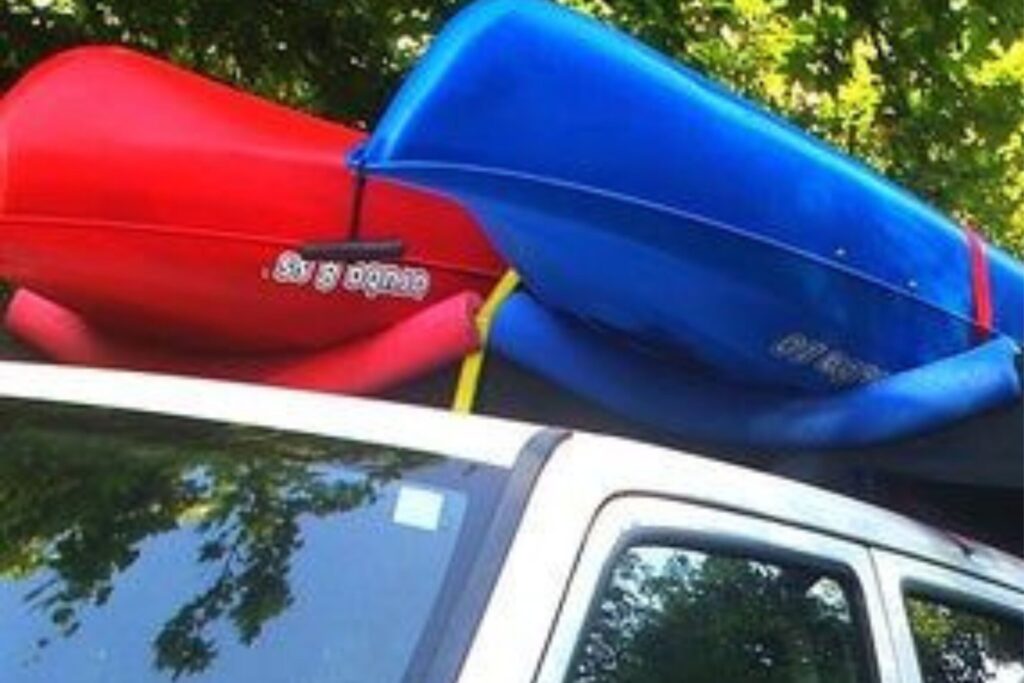
Choosing the Right Method by Vehicle Type
Different vehicles require different tricks. Here’s how to handle the job depending on what you drive:
Sedans and Compact Cars
For sedans, foam blocks or pool noodles are your best allies. Place them under the hulls and strap the kayaks through the door frames. Expect the kayaks to extend well beyond the trunk, so mark them clearly with a flag. Keep your strap tension firm but not crushing.
Hatchbacks and Small SUVs
With folding rear seats, you may be able to angle one kayak inside, leaving the second on top. If both go on the roof, arrange them side by side or stacked hull-to-hull with straps through the doors. Always use bow and stern tie-downs for highway stability.
Full-Size SUVs and Minivans
These vehicles allow the most flexibility. Two kayaks can rest side by side on foam blocks, or one inside (if short enough) and one on top. The wide roof also reduces wobble, making foam-block transport safer.
Pickup Trucks
Pickups offer the easiest solution. Slide kayaks into the bed with padding to protect the hull and tailgate. If boats extend more than four feet, use a hitch extension and safety flag. For two kayaks, stack them carefully or carry one inside the bed and one on the roof with foam blocks.
Vans and Cargo Vehicles
In many cases, shorter recreational kayaks can fit fully inside. Use interior tie-down points to prevent sliding. For longer models, combine interior space with roof blocks.
|
|
|
|
Essential Gear for Transport
To safely transport two kayaks, you’ll need a few key items:
- Cam straps (12–15 ft): Easier and safer than ratchet straps, which can overtighten and crush hulls.
- Foam blocks or pool noodles: Create grip and protect your roof paint.
- Bow and stern lines: Secure the boats against forward or upward motion.
- Red safety flag: Required for loads sticking past the vehicle’s rear.
- Protective cloth or towel: Prevents straps from rubbing car paint.
This simple kit is inexpensive and reusable, making it far cheaper than the best kayak roof racks on the market.
Pickup Bed Transport for Two Kayaks
If you own a pickup, transporting kayaks becomes easier but requires padding. Place a blanket or foam under the boats to prevent scratches. If both kayaks fit flat, stack them carefully and strap across the bed.
If they extend beyond the tailgate, add a red flag and secure stern lines to the bed hooks. For long trips, a hitch bed extender provides extra support.
Interior Transport Options
For shorter kayaks, inflatables, or folding models, the simplest answer is to carry them inside the vehicle. Fold down seats, protect upholstery with a tarp, and slide the kayaks in. Angle them carefully to avoid windshield contact. This method avoids roof worries but limits passenger space.
Pre-Trip Checklist
Before driving, confirm:
- Straps are firm and not twisted.
- Bow and stern lines are secure and clear of exhaust pipes.
- Mirrors provide full visibility.
- Safety flag is visible from behind.
- No straps are rubbing sharp edges that could cut them.
Check again after your first mile and every rest stop.
What Can Go Wrong
Transporting kayaks without a rack has pitfalls. Common issues include:
- Straps loosening in rain: Nylon stretches when wet. Always re-tighten.
- Wind lift: Without bow lines, air pressure can shift the load.
- Scratched paint: Place cloth or towels under straps.
- Overtightened straps: Crushed plastic hulls are expensive to repair.
Awareness of these risks is what separates a safe trip from a roadside disaster.
Preventing Kayak Damage
Plastic hulls are durable but not indestructible. Distribute weight with foam blocks, avoid direct strap pressure over cockpit rims, and never overtighten. After the trip, inspect for stress lines, scratches, or cracks before storing. A small crack can grow during your next paddle.
Comparing Options: Temporary vs Permanent Solutions
- Foam blocks and straps: Cheap, portable, effective for occasional trips.
- Pool noodles: Creative substitute, but less durable.
- Temporary J-cradles: Mimic real racks but cost more.
- Permanent roof racks or trailers: Expensive upfront, but safest for frequent paddlers.
For anyone who moves boats often, investing in a kayak rack for car without rails or a trailer is worth considering long-term.
FAQs on How to Transport 2 Kayaks Without a Roof Rack
Can I carry two kayaks on a sedan?
Yes, but expect overhang. Use foam blocks, straps through the doors, and bow/stern lines. Always flag the rear.
Is it safe to use ratchet straps?
Not recommended. Ratchet straps crush hulls if overtightened. Cam straps provide secure tension without damage.
Do I need a red flag?
Yes, if the boats extend more than 3–4 feet beyond your car. It’s required by law in most regions.
How far can kayaks stick out the back of a truck?
Most states allow up to 4 feet with a red flag. Anything more may require a bed extender.
Can one person load two kayaks?
Yes, with practice. Load one at a time, sliding from the rear onto foam blocks. A helper makes the process faster and safer.
The Bottom Line on How to Transport 2 Kayaks Without a Roof Rack
Figuring out how to transport 2 kayaks without a roof rack isn’t about brute force, it’s about technique, the right gear, and respect for safety. For sedans and small cars, foam blocks and cam straps are the go-to solution.
Pickup owners have it easiest, with truck beds and hitch extenders making transport straightforward. No matter the vehicle, the keys are balance, proper strapping, bow and stern lines, and legal flags for overhang.
While temporary solutions work, if you find yourself hauling kayaks every weekend, investing in the best kayak roof racks will save time and nerves. Until then, the foam-block method works surprisingly well, even for two boats. Handle your kayaks carefully, check your straps often, and you’ll arrive at the water ready to paddle instead of worrying about what fell off the roof.
